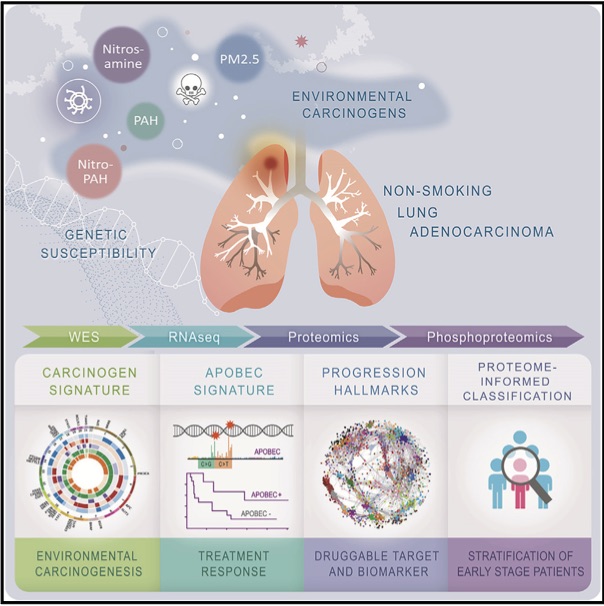Jurisdiction:
Taiwan
Organ System:
Lung
Funding Organizations:
- Academia Sinica
- Ministry of Science and Technology (MOST)
- National Taiwan University (NTU), Taiwan
Research Organization:
- Academia Sinica, Taiwan
Principal Investigators
:- Yu-Ju Chen
- Pan-Chyr Yang
- Hsuan-Yu Chen
- Jyoti S. Choudhary
Publication:
External Links:
Lung cancer in East Asia is characterized by a high percentage of never-smokers, early onset and predominant EGFR mutations. To illuminate the molecular phenotype of this demographically distinct disease, we performed a deep comprehensive proteogenomic study on a prospectively collected cohort in Taiwan, representing early stage, predominantly female, non-smoking lung adenocarcinoma. Integrated genomic, proteomic, and phosphoproteomic analysis delineated the demographically distinct molecular attributes and hallmarks of tumor progression. Mutational signature analysis revealed age- and gender-related mutagenesis mechanisms, characterized by high prevalence of APOBEC mutational signature in younger females and over-representation of environmental carcinogen-like mutational signatures in older females. A proteomics-informed classification distinguished the clinical characteristics of early stage patients with EGFR mutations. Furthermore, integrated protein network analysis revealed the cellular remodeling underpinning clinical trajectories and nominated candidate biomarkers for patient stratification and therapeutic intervention. This multi-omic molecular architecture may help develop strategies for management of early stage never-smoker lung adenocarcinoma.

